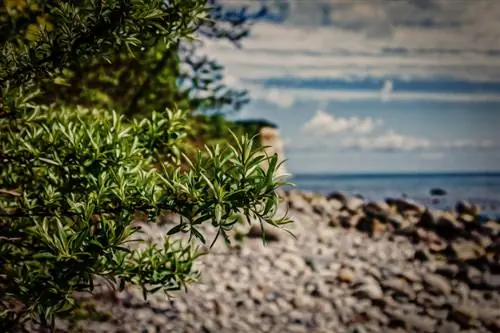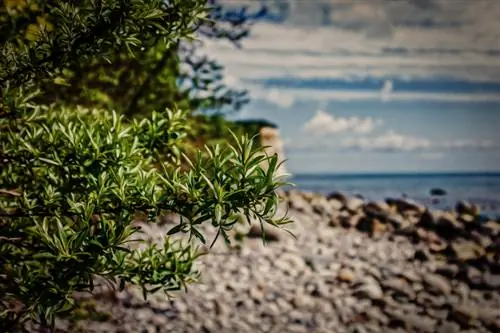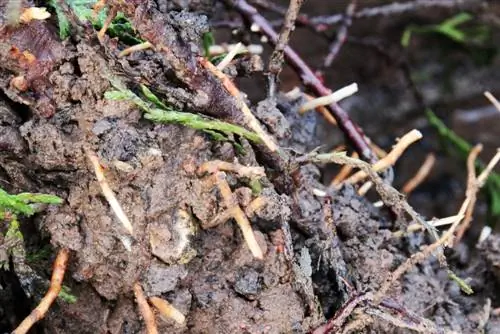- Author admin [email protected].
- Public 2023-12-16 16:46.
- Last modified 2025-01-23 11:20.
The sea buckthorn is extremely undemanding, site-tolerant and easy to care for - and yet: it has caused many a gardener to despair. Why? This has to do with his roots. But what could be so bad about roots?

What are the roots of sea buckthorn like?
The roots of sea buckthorn are deep (1.5-3 m deep) and have aggressive lateral roots that extend close to the surface (5-12 m long). They penetrate through cracks and plates to reproduce and live in symbiosis with nitrogen-fixing bacteria.
The basic structure of its roots
The roots of sea buckthorn require a deep underground. The reason: deep main roots form that take up a lot of space. They can penetrate depths of between 1.5 and 3 m. For this reason, it is less advisable to keep sea buckthorn in a planter.
In addition to the deep main roots, there are many lateral roots. These expand close to the surface and reach an average length of 5 m. Under ideal ground conditions they can reach a horizontal dimension of up to 12 m.
Aggressive and ambitious roots
The disadvantage that arises from the roots for many gardeners has to do with their urge to spread. The roots are ambitious and with a high potential for aggression penetrate through cracks, paving slabs, paving stones and other things in order to propagate the plant through runners.
There are also advantages
But the roots of sea buckthorn also have some advantages. This includes, for example, that they live in symbiosis with nitrogen-binding nodule bacteria. For this reason, sea buckthorn can thrive even in locations such as sandy soils with an insignificant nutrient content.
Another advantage is that the plant's runner-producing roots make it ideal for securing substrates such as the following:
- Slopes and embankments
- Riverside areas
- Dunes
Last but not least, the roots are s alt-tolerant. They have special glands that allow them to fight off s alt in the ground. This means that sea buckthorn can grow without problems in coastal regions and on roads that have road s alt in winter.
Tips & Tricks
If you want to plant sea buckthorn, you should think carefully beforehand about where. In addition, once planted, it should be left in place, as its many runners are difficult to remove after just 2 to 3 years.






